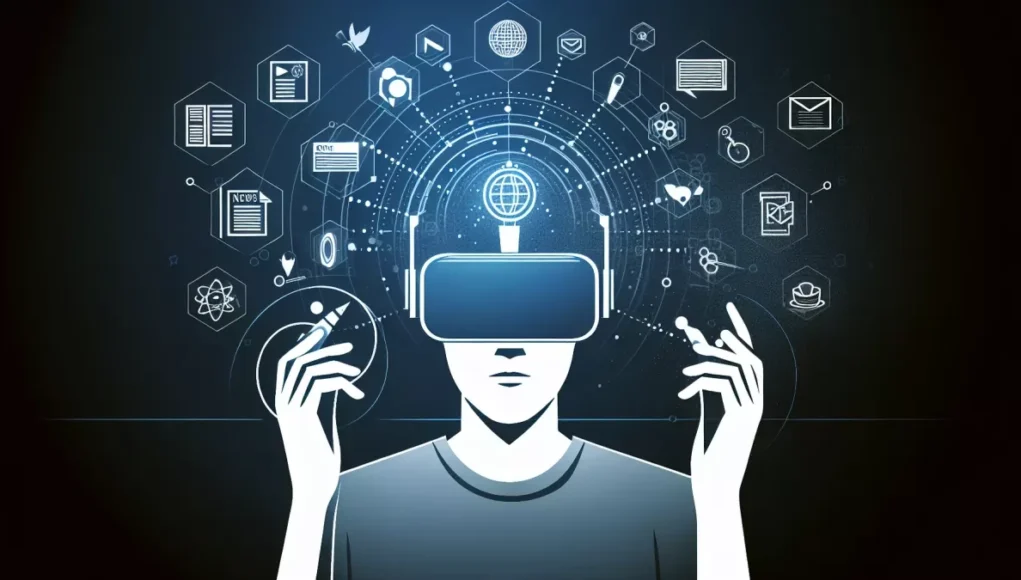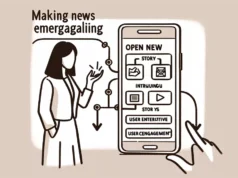The proliferation of immersive journalism, based on the use of Virtual Reality (VR) and Augmented Reality (AR) technology, is changing the face of modern news consumption. These advancements have allowed news stories to be brought to life with an unprecedented bounty of visual and auditory cues. Currently, this form of journalism is gaining momentum in the landscape of journalism, credit down to its potent ability to allow readers to “experience” news events, rather than merely consume them.
The concept of immersive journalism first took root when Nonny de la Peña, a former Newsweek journalist, used virtual reality technology to create a fully immersive, 3D experience about the harsh realities of life as a Guantanamo Bay prisoner. Using actual audio from an interrogation, and a headset that transported the viewer into a harsh and vividly rendered cell, the project pioneered the potential of VR and AR in journalism.
Since then, several news organizations, including The New York Times, The Guardian, Al Jazeera, and BBC have taken advantage of immersive technologies to enhance stories. The New York Times, for example, launched its dedicated VR app, NYTVR, in November 2015. The first VR film the Times made available was “The Displaced,” a chronicle of three children displaced by war and necessity. The film placed viewers directly into the lives of these children, bringing another dimension to the term ‘immersion’.
Similarly, the BBC, ever a proponent of innovative broadcasting techniques, has utilized VR and AR to bring its audience closer to a range of unique situations. This includes a report on the Greek refugee crisis, which used 360-degree video to immerse viewers in the life and experiences of a 16-year-old Iranian migrant.
The benefits of immersive journalism mindset are not just limited to the enhancement of the traditional watching or reading experience; they also extend to the very core of journalistic ethics – objectivity, balance, and impartiality. By using VR and AR technology, the journalist neutralizes the risk of subjectivity by simply showing events as they are, allowing viewers to draw their own conclusions.
Despite the promise, some challenges still loom large. It may be that not every household will have access or the means to access these technologies, and as such, there are concerns that immersive journalism could unwittingly foster a new digital divide.
Another critical concern revolves around methods of distribution. With the varied number of different devices available, each with its own specifications and requirements, creating standard formats to cater to all seems a gargantuan task.
Regardless of the potential roadblocks, the journey immersed journalism has embarked upon is of immense importance for future journalism. Beyond the breathtaking visuals and immersive experiences, the potential for VR and AR to breed empathy in news audiences is being regarded as a game-changer. By enabling audiences to walk a mile in someone else’s shoes, these technologies might just redefine how society engages with news stories.
Data from the ‘Media Landscapes – United Kingdom’ report showed that 10% of British adults owned a VR headset in 2018, and many others had experienced VR through mobile phone adapters or at dedicated VR centers. Instead of detracting from these concerns, news organizations should welcome them as opportunities for meaningful conversation around how journalism can and should adapt to new technologies to enrich its storytelling.
Immersive journalism with VR and AR has only just begun showing us how it can revolutionize modern storytelling. However, as with any frontier technology, it necessitates careful crafting to serve the values of good journalism that should be at the heart of its implementation. Powering the next revolution in news, this inventive approach to journalism is poised to breathe new life into stories worth telling.
Sources:
1. “Pioneers in immersive journalism.” Nonny de la Peña, Emblematic.
2. “From spectacle to spectacular: how VR storytelling evolved in 2017.” Sara M Watson, NiemanLab.
3. “360 video and VR,” BBC News Labs.
4. “Virtual Reality Journalism.” The Tow Center for Digital Journalism, Columbia Journalism Review.
5. “Media Landscapes.” European Journalism Centre and Poynter Institute.






